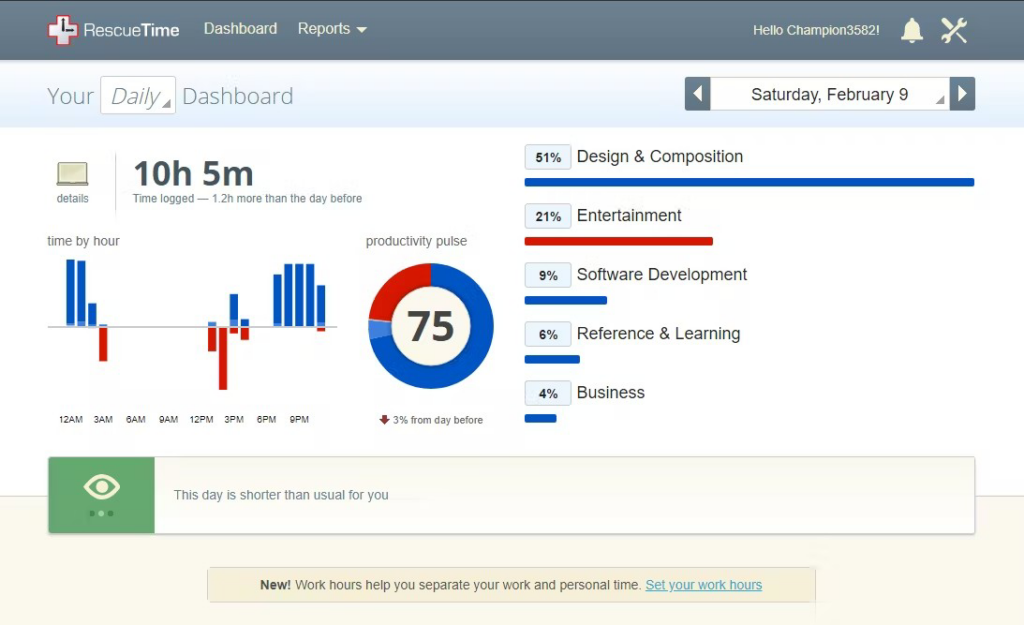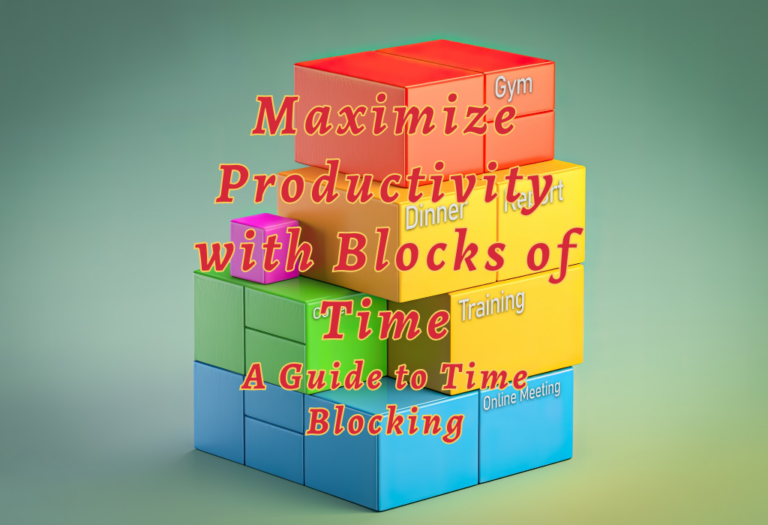Time Boxing: Expert Tips to Maximize Your Productivity
Time boxing is an essential technique for busy professionals, entrepreneurs, and freelancers looking to maximize productivity. It’s a simple concept with powerful results: by allocating specific amounts of time to certain tasks or activities, you can optimize your schedule and make sure you stay on track. Whether it’s setting goals, creating a plan, sticking to the program, or managing interruptions – this article will provide expert tips and tools to help take control of your day-to-day life so that you can live a more fulfilling life. Time boxing is the key.

What is Time Boxing?
Time boxing is a time management technique that involves setting specific amounts of time for tasks and activities. It helps busy professionals, entrepreneurs, and freelancers optimize their schedules, increase productivity, and live a more fulfilling life.
Definition of Time Boxing:
Time boxing is allocating a fixed amount of time to complete an activity or task. This allows you to focus on the job without distractions or procrastination. By breaking down large projects into smaller chunks with deadlines attached to each piece, it’s easier to stay motivated and productive throughout the entire project.
Difference Between Time Blocking and Time Boxing
Time blocking and timeboxing help you optimize your schedule, increase productivity, and live a more fulfilling life. While both involve allocating fixed periods to activities, there are some key differences between the two.
Time Blocking:
Time blocking involves reserving specific times for tasks on your agenda. These “time blocks” usually dictate an activity’s start and end time, with shorter windows marked on your calendar. At the end of each block, you assess whether or not you were able to finish the task before its allotted period is up – if not, then allocate more time next time.
Time Boxing:
On the other hand, with timeboxing, you limit how much time can be spent on certain activities in order to ensure they take away only a little of your day. These “timeboxes” cover larger periods of 15 minutes to several months and come with deadlines and goals associated with them as well as deliverables, budgets, and milestones. Once the set amount of allocated time has passed, regardless of progress made within it, you declare work done at this point so that you can move on to other tasks or projects without being held back by one particular item any longer than necessary.
Both strategies have their advantages:
While Time Blocking allows for greater flexibility when scheduling tasks according to priority level, Time Boxing helps keep distractions at bay by limiting how long they can take up our attention span during our working hours. Ultimately which strategy works best depends entirely upon individual preferences – but either way, these tools provide valuable insight into better managing our daily workloads efficiently.
Benefits of Timeboxing
Timeboxing is a great way to maximize productivity and optimize your work routine. By allocating specific periods for certain tasks, you can ensure that you’re making the most of every minute – while also avoiding burnout or procrastination. Here are some of the benefits of using this technique:
Improved Focus:
When you have a limited time to complete a task, it helps you focus on getting it done quickly and efficiently. You’ll be less likely to get distracted by other things when there’s an impending deadline looming over your head.
Increased Productivity:
With timeboxing, you can break down complex tasks into smaller chunks that are easier to manage and more achievable in shorter amounts of time – which will help increase overall productivity levels throughout the day.
Reduced Stress Levels:
Knowing exactly how much time has been allocated for each task means that there won’t be any surprises at the end of the day if something takes longer than expected – reducing stress levels significantly. Plus, having clear deadlines makes it easier to prioritize tasks based on importance and urgency and avoid procrastination altogether.
Better Time Management Skills:
As mentioned above, having clear deadlines encourages better organization skills when managing multiple projects simultaneously, allowing professionals to stay on top of their workload without feeling overwhelmed or rushed at any point during their working hours.
Achievement Tracking:
Finally, tracking progress through regular check-ins with yourself allows for improved goal setting and achievement tracking, helping busy professionals reach milestones faster while staying motivated along the way.
The Drawbacks of Timeboxing
Timeboxing is a popular time management strategy that helps busy professionals, entrepreneurs, and freelancers optimize their schedules and increase productivity. It involves breaking down tasks into smaller chunks with specific start and end times. While this approach can be incredibly helpful for staying on track and getting things done, there are some drawbacks to consider before you jump in.
Underestimating How Long it Will Require to Complete the Task:
One issue you may run into when using the timeboxing method is underestimating how long it will take to complete a task. If you set aside too little time for something, likely, you will only finish the job within your allotted timeframe. To combat this problem, try starting with soft timeboxes so that, if needed, you can extend them without feeling like a failure or having to start over from scratch. As you become more experienced with setting up these blocks of work time, your estimates should also improve.
Requires Careful Tracking of all Tasks:
Another potential downside of timeboxing is that it requires careful tracking of all tasks—not just those assigned during each block of worktime but also any other related activities throughout the day or week (such as emails sent or calls made). This level of detail might seem overwhelming at first, but once implemented correctly can help give an overall better understanding of where your team’s collective efforts are going—and what needs to be done by when in order to achieve success.
Switching between Tasks:
Finally, switching between tasks every few minutes while following the strict guidelines laid out by the timer can sometimes interrupt flow states essential for maximum productivity levels and creativity boosts alike. The best way around this obstacle is a similar grouping of activities together in back-to-back blocks so that transitioning from one task to another feels natural rather than disruptive or jarring.
Ultimately though, remember:
Timeboxing is meant to serve YOU, not vice versa. So feel free to stick strictly within its boundaries if doing so would mean sacrificing quality output; instead, use it as a framework from which effective work habits can emerge – no matter what form they take.
Setting Goals with Time Boxing
When setting goals with time boxing, it’s important to identify what needs to be done to achieve them. This could include:
Time boxing is a powerful tool to help you set and achieve your goals, allowing you to break down tasks into manageable pieces with appropriate deadlines.
Creating a Schedule with Time Boxing
It involves mapping out your daily activities in advance so you can stay on track throughout the day. Here are some strategies for creating a successful schedule with time boxing:
Sticking to the Plan with Time Boxing
Sticking to the plan with time boxing requires discipline and dedication to achieve desired results. Developing strategies to stay focused on tasks is key to success. Establishing a routine can help you stay organized and motivated, such as setting aside specific times of the day for certain activities or tasks. It’s also important to set realistic goals that are achievable within the allotted timeframe. Additionally, having an accountability partner or group can be beneficial in helping you stay on track with your schedule.
Utilizing technology can also keep you organized and efficient when managing your time box plan. Many apps allow users to create lists, set reminders, track progress toward goals, and more. These tools make it easier to stick with your plan by providing visual cues throughout the day that remind you of what needs to be done next and how much time is left until completion.
Finally, adjusting your schedule is essential for successful timeboxing management. If something unexpected arises or there is a change in priorities, it is important to adjust accordingly so that all tasks remain manageable within their deadlines. Changes should be made thoughtfully and strategically rather than impulsively, as this will help maintain overall productivity and efficiency over time.
Managing Interruptions with Time Boxing
Managing interruptions with time boxing is essential for busy professionals, entrepreneurs, and freelancers who need to stay productive. Identifying potential distractions in advance is key to avoiding or minimizing them when possible. To do this, it’s important to be aware of your triggers that can lead to procrastination and take steps to eliminate them from your environment. This could include setting boundaries around social media use or turning off notifications on your phone during work hours.
Saying no when necessary:
Learning to say “no” when necessary is also important in managing interruptions with time boxing. Taking on too many tasks can lead to burnout and overwhelm, so it’s important to prioritize the most urgent tasks first and then delegate the rest as needed. Saying no politely but firmly will help you stay focused on what needs to get done without feeling guilty about not taking on every task that comes your way.
Using downtime productively:
Taking advantage of downtime productively is another way of effectively managing interruptions with time boxing. Rather than using breaks as a chance for distraction, try using them as an opportunity for reflection or planning by making a list of things you want or need to accomplish in the near future so that you have something concrete ready when you return to work mode again.
Delegating tasks:
Delegating tasks with time boxing can be a great way to free up some much-needed space in our schedules if we are feeling overwhelmed by all the demands placed upon us. Assessing which tasks can be delegated requires looking at each one objectively and determining whether someone else would be better suited for completing it due to their experience or availability. Finding the right people for these jobs involves researching their qualifications thoroughly before entrusting them with any responsibility. Keeping track of progress and results helps ensure everything stays organized without compromising quality standards.
Evaluating performance regularly:
Evaluating performance through regular check-ins allows us to identify areas where improvement might be needed while measuring success against set goals and gives us a clearer picture overall of how well our strategies are working out over time. Analyzing the feedback from clients, colleagues, team members, etc., provides invaluable insight into what works best under certain circumstances; making adjustments accordingly ensures everyone remains satisfied throughout the process.
Timeboxing Tools and Apps
Timeboxing is a great way to stay on top of your tasks and increase productivity. It involves breaking down larger projects into smaller, manageable chunks of time. This helps you focus on one task at a time and avoid getting overwhelmed by the big picture.
Using tools and apps for timeboxing can make it easier to manage your schedule and track how much time you spend on each task. Here are some great options:
#1. Clockwise:
Clockwise integrates with Google Calendar to help carve out more Focus Time in your day for activities like timeboxing tasks. You can also use it to set up recurring events to automatically appear in your calendar every week or month without manually entering them each time.

Pricing Plans:
Free Plan with a basic plan for $6.75/user/month and a pro plan for $11.50/user/month. Projects are all billed annually.
#2. RescueTime:
RescueTime tracks how much time you spend on various daily tasks, including surfing the internet, checking email, or using social media sites. This information can be used as a starting point when setting up a new project plan or adjusting an existing one based on where most of your energy is going during the day.

Pricing Plans: RescueTime offers three different pricing plans depending on individual needs; Lite (free), Premium ($9/month), and Elite ($18/month).
#3. Toggl:
Toggl is another popular tool for tracking how long you spend working on different projects and tasks throughout the day—perfect for those who want an easy-to-use timer app that doesn’t require too many clicks or setup steps before getting started with their workday routine. With Toggl’s detailed reports, users can quickly identify areas where they’re wasting valuable minutes (or hours.), so they can adjust their workflow accordingly moving forward.

Pricing Plans:
Toggl offers a free plan and a 30-day free trial for all the premium plans. The Starter plan costs $10/month/member, while the Premium plan costs $20/month/member.
#4. Evernote:

Evernote makes it easy to store notes related to any project in one place—from ideas brainstormed during meetings through completed checklists associated with individual tasks within that project timeline—so nothing gets lost while juggling multiple deadlines at once. Plus, its powerful search capabilities make finding specific items quick and painless, even if hundreds (or thousands) are already stored away inside Evernote’s virtual filing cabinet system.
Pricing Plans:
There are three pricing plans available – Basic (free), Personal $6.23/month), Professional ($8.91/month), and Evernote Teams ($14.96/month).
Common Mistakes When Starting With Timeboxing
Timeboxing is a great way to increase productivity and manage your time better. However, making mistakes is easy when you first start using this technique. Here are some of the most common ones:
FAQs About Time Boxing
Conclusion
By setting goals with time boxing, creating a schedule that works for you, sticking to the plan despite interruptions, and managing those interruptions effectively, you can make sure that your day-to-day tasks are completed efficiently. Timeboxing allows you to control your time and focus on what matters most in life. Proper use of the time boxing technique makes it possible to achieve more in less time and live a more fulfilling life.
Do you feel overwhelmed and unproductive? Do you need help managing your time effectively? Schedulemakeover.com is here to help! Our Time Management expert tips and tools can help optimize your schedule, increase productivity, streamline project management processes, improve time management skills, and ultimately allow you to live a more fulfilling life. Join us today on our journey towards success – start making the most of every minute with schedulemakeover.com!






